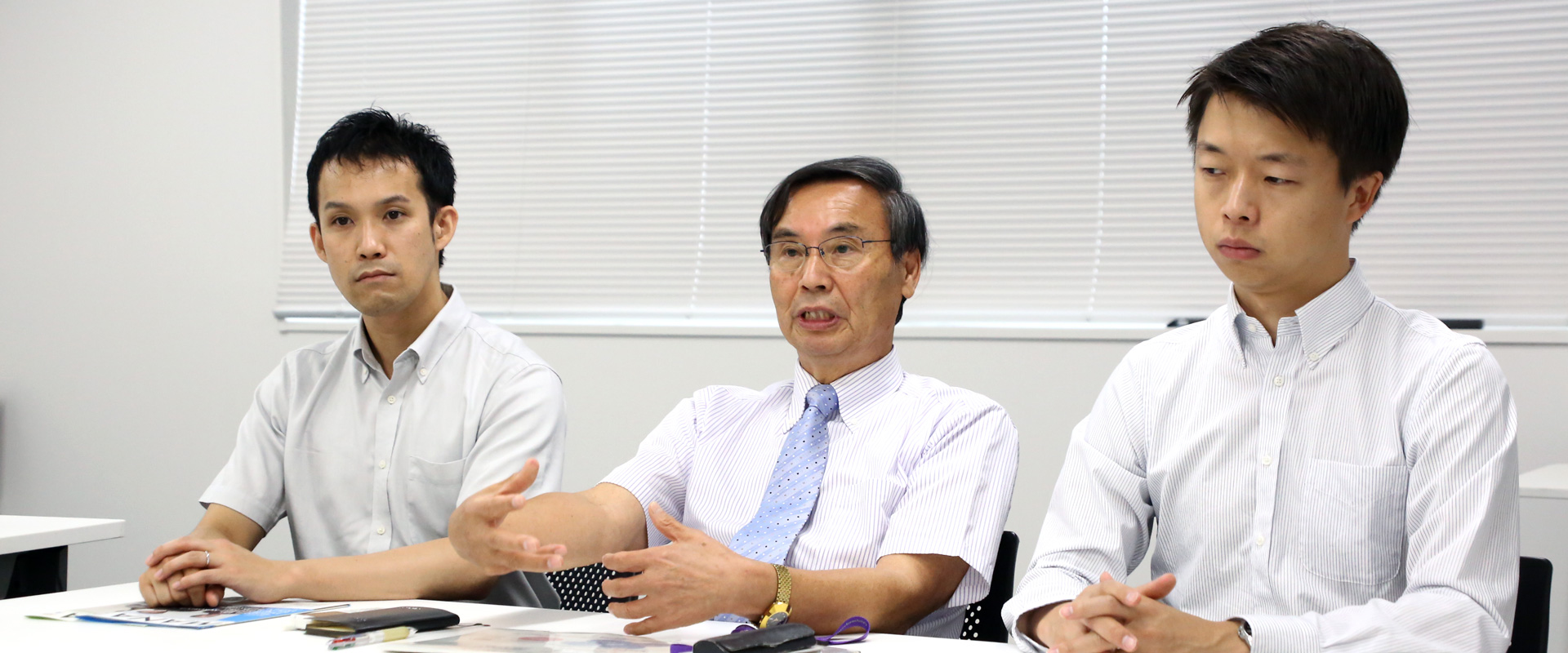MANA Independent Scientists System:
Total freedom to conduct your own research
Yoshio Bando, Akihiro Okamoto & Gaku Imamura
The International Center for Materials Nanoarchitectonics (MANA) was launched in 2007 with the vision of “pioneering a new paradigm in materials development on the basis of ‘nanoarchitectonics’”
“During the 10-year World Premier Institute Program, we implemented wide ranging plans such as creating an international environment for research and establishing a global network of nanotechnology research centers to achieve our goals,” says Yoshio Bando, MANA’s Executive Advisor. “Another important mission was devising methods for nurturing young scientists who would take the lead in the next generation of research on nanoarchitectonics. This commitment led to the birth of the International Center for Young Scientists (ICYS) for postdoctoral scientists. The ICYS has been very successful and led to the launch of the Independent Scientists System for young researchers.”
MANA Independent Scientists System
As the name implies, researchers are given complete independence to conduct their research. “It’s rare for national research institutions to give researchers in their thirties so much freedom to pursue research,” says Bando. “We do assign a mentor but the independent scientists make their own decisions about their work. They do not have a boss.”
Candidates for the Independent Scientists System undergo a thorough assessment procedure that includes a track record with successful applications for major projects including “JST- Sakigake” projects and MEXT Grants-in-Aid for Scientific Research level-B (KAKEN-B) and above. Other factors include both management and communication skills with other scientists for building relationships with other researchers.
Successful applicants receive a small startup research budget as well as support with administration. But the onus is on them to search for funding from industry, governments and investors, as well as expanding their research with partners within Japan and abroad.
After five years, Independent Scientists are assessed according to guidelines drawn up by NIMS. Career paths include permanent positions as group leaders and principle investigators at MANA, researchers at NIMS, and moving to other countries to take up leading roles at internationally renowned research institutes.
“The researchers on this program are very active and motivated,” says Bando. “The only issue that we tend to be careful about is making sure that ‘independence’ does not mean ‘isolation’ from other researchers at MANA.”

from left to right: Gaku Imamura, Yoshio Bando & Akihiro Okamoto
Akihiro Okamoto
MANA Independent Scientist, Batteries and Fuel Cells Field, Nanostructured Electrocatalyst Group, C4GR-Global Research Center for Environment and Energy based on Nanomaterials Science
Akihiro Okamoto started as a MANA Independent Scientist in April 2018. He is building on his doctorate research on the exchange of electrons between microorganisms to metals such as iron in minerals that exist in the local living environment of such organisms. “I am enjoying the freedom to make my own decisions about my research,” says Okamoto. “I have collaborators overseas and in Japan. Bioelectrochemical systems such as microbial fuel cells are interesting as basic research on nanomaterials point as well as potential applications such as energy generation as microbial fuel cells.”
Selected Publications
[1]
Akihiro Okamoto, Kazuhito Hashimoto, Kenneth H. Nealson, and Ryuhei Nakamura, “Rate enhancement of bacterial extracellular electron transport involves bound flavin semiquinones,” PNAS, 110, 7856-7861, (2013).
DOI: 10.1073/pnas.1220823110
[2]
Xiao Deng, Naoshi Dohmae, Kenneth H. Nealson, Kazuhito Hashimoto, Akihiro Okamoto, “Multiheme Cytochromes Provide a Pathway for Survival in Energy-limited Environments,” Science Advances, 4, (2018).
DOI: 10.1126/sciadv.aao5682
Gaku Imamura
MANA Independent Scientist, Center for Functional Sensor & Actuator, Olfactory Sensors Group, Research Center for Functional Materials
Gaku Imamura was on the ICYS-MANA program and became a member of the Independent Scientist program in October 2017. “I worked on graphene for my doctorate and afterwards on fuel cells as part of an industrial NEDO project,” says Imamura. “I am now combining my expertise in materials science with artificial intelligence-based algorithms, and collaborating with industry on nanomechanical sensors for detecting gases; I want to create a new standard for smell.”
Selected Publications
[1]
Gaku Imamura, Koichiro Saiki, “Modification of Graphene/SiO2 Interface by UV-Irradiation: Effect on Electrical Characteristics,” ACS Applied Materials & Interfaces, 7, 2439-2443 (2015).
DOI: 10.1021/am5071464
[2]
Gaku Imamura, Kota Shiba, Genki Yoshikawa, and Takashi Washio, "Analysis of Nanomechanical Sensing Signals; Physical Parameter Estimation for Gas Identification," AIP Advances, 8, 075007 (2018).
DOI: 10.1063/1.5036686
#####
